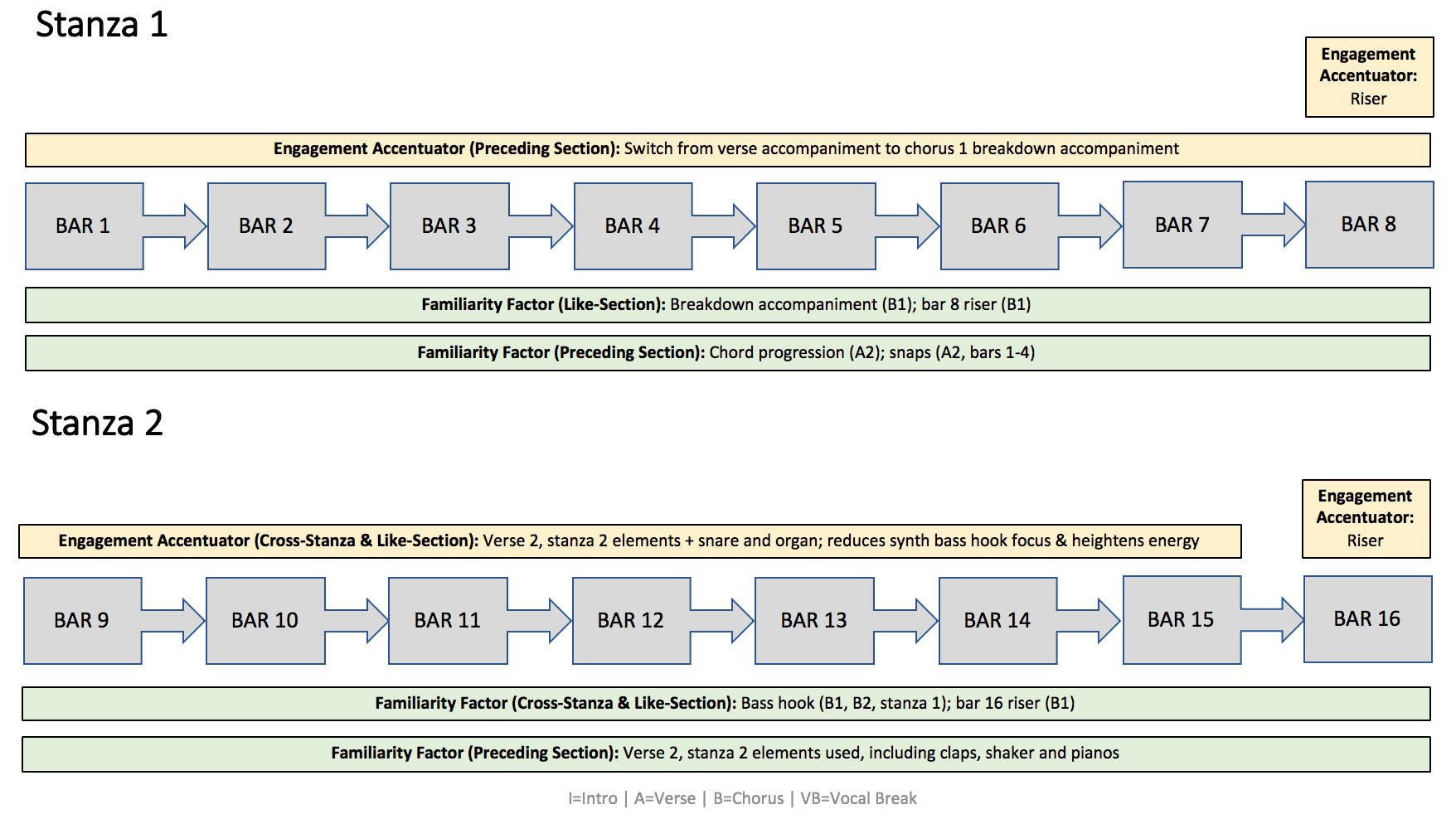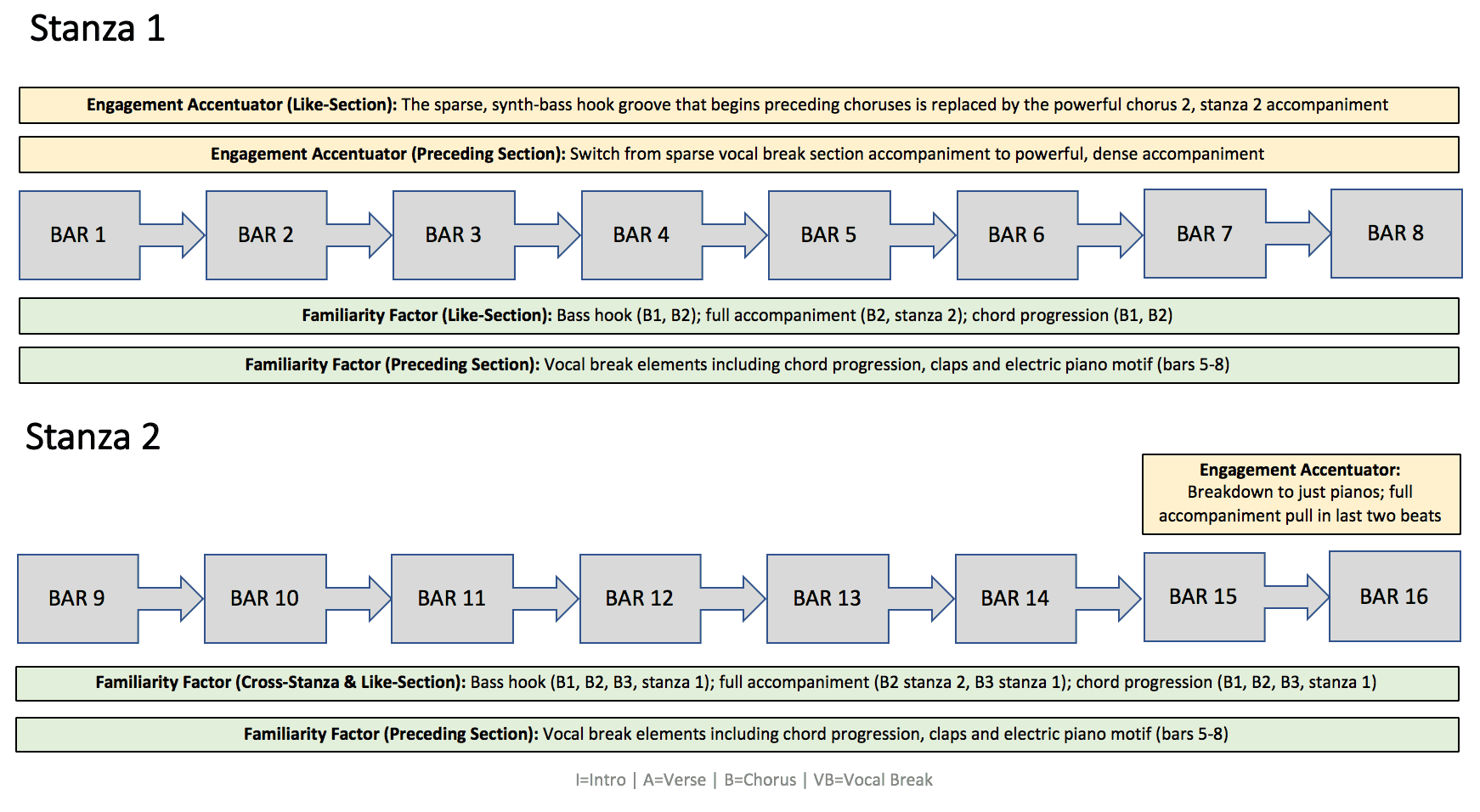Ask just about anyone what the main ingredients are in a mainstream hit, and the two that will most often come to mind are melody and lyrics. While their importance in a song’s success is undeniable, a super strong instrumental arrangement is equally necessary. Without it, even the most infectious melodies and engaging lyrics won’t reach their fullest potential.
Dance Monkey, the smash hit by Australian artist Tones and I, is a perfect case-in-point. While Tones and I’s uniquely infectious melodies and compelling lyrics certainly helped propel the song to the top spot on almost 40 charts around the world, its highly effective instrumental arrangement unquestionably bolstered the song’s impact. To put it best, Dance Monkey’s instrumental arrangement is in and of itself a masterclass on how to capitalize on trends, achieve a unique yet universally appealing vibe and create a dynamic and engaging listening experience that keeps the listener hooked and wanting more.
In this article, we look at how Dance Monkey’s instrumental arrangement serves the song where it counts the most – the chorus.
Chorus 1
The first chorus is arguably the most important chorus in any song. Why? Because it’s the section that officially “seals the deal” with the listener, determining whether they’ll continue listening or tune out. But in order to maximize the first chorus’s arrival, it needs to be musically set up long before its first downbeat is reached. This includes providing an engaging cross-section road to the chorus, as well as utilizing specific techniques to maximize its impact when it hits.
Dance Monkey employs two chorus impact accentuator techniques, the first happening smack in the middle of the first verse – an unlikely place. Following the groove development across the first six bars, the verse goes into breakdown mode in bars 7 and 8, which consist solely of two sustained acoustic piano whole notes. At this point, because of the breakdown’s placement at the end of an 8-bar section (which has been the most common verse section length over the last five years) and the popular technique of thinning out a verse arrangement just before the chorus hits, the listener is led to expect the chorus to directly follow this breakdown. However, the listener is instead “faked out” and hit not with the chorus, but with a continuation of the first verse across an entire second stanza. This effectively heightens their engagement as well as tension and anticipation for the impending chorus, which hits eight bars later than initially anticipated.
The second setup happens in the last bar of the verse, where a technique Hit Songs Deconstructed calls a Full Accompaniment Pull S.I.A. (Section Impact Accentuator) is employed. Here, the full accompaniment is pulled from the mix, achieving a few key things: it further heightens tension and anticipation for the chorus; it allows for Tones and I’s vocal pickup to further connect and resonate with the listener, effectively drawing them into the chorus; it maximizes the chorus’s impact through the dynamic contrast imparted; and it provides separation between two very instrumentally disparate sections.
Following the employment of this technique, the ensuing chorus turns the song on its head, breaking down to a revamped accompaniment consisting of a synth bass hook, four-on-the-floor kick, snaps and low-level hi hat, all making their first appearance in the song here. This, along with Tones and I’s vocals, creates an infectious, head-bobbing, minimalist groove that provides highly engaging cross-section contrast, while the repetition of the same chord progression from preceding sections maintains cross-section familiarity.
Additionally, in contrast to the more dynamic verse, the chorus’s accompaniment remains constant throughout the entirety of the section. This helps to reinforce the infectious bass groove with the listener, maintain danceability, and enable Tones and I’s unique vocals to connect with the listener without distraction from overly busy accompaniment.
Chorus 2
Chorus 2, which follows the second verse, begins with the same exact instrumental arrangement as its chorus 1 counterpart. In addition to providing engaging cross-section contrast against the verse, the like-section instrumental commonalities between the two choruses allow the listener to easily lock back into the now familiar groove and get the bass and vocal hooks further ingrained in their head.
However, in contrast to the one-stanza chorus 1, chorus 2 consists of two stanzas. While the verbatim repetition in the first stanza is both effective and well-warranted, if the same exact accompaniment had been used for BOTH stanzas, the chorus would wind up becoming overly monotonous, causing the listener’s engagement to wane. To prevent this, following a transitional riser effect, stanza 2 kicks energy and excitement up a notch by adding a host of instruments to the mix, some new and some recycled from the verses. Note that the use of verse material serves to make the song more cohesive, heighten cross-section familiarity and bring together two of the song’s most recognizable elements: the verse’s eighth note-based electric piano motif and the chorus’s foundational synth bass hook.
Though the addition of these new elements is highly effective, their inclusion also diminishes the prominence of the synth bass hook, pushing it towards the back of the mix. While this may seem counterintuitive, it too is well warranted. It prevents the highly-repetitive hook from waring out its welcome with the listener while still getting it ingrained in their head, albeit in a more “under-the-radar” manner. Additionally, the shift to a fuller, more powerful arrangement also helps to maximize engagement in a live setting – be it at a concert, club or party, stanza 2’s full accompaniment is sure to get audiences to go from head-bobbing to full-on dancing.
Chorus 3
The third and final chorus in the song once again defies the listener’s expectations. While they are likely expecting – and longing – to hear that super-infectious bass/drum breakdown groove as they heard in chorus 1 and the first stanza of chorus 2, it never arrives. Instead, the third chorus picks up where the second stanza of chorus 2 left off, forgoing the sparse bass hook/kick groove all together and instead launching right into the powerful and excited arrangement.
As with the other strategic arrangement decisions made thus far in the song, this too is spot on. The chorus’s high-energy arrangement right from the get-go provides engaging contrast against the sparse vocal break section that precedes it, as well as the other choruses. Additionally, the consistency across both stanzas allows for the main focus to be on Tones and I’s infectious vocals, which develop and build across stanzas against the static instrumental arrangement. Also note that as chorus 3 is the final section of the song, its fuller arrangement both keeps the listener at an excited high as the song comes to a close and leaves them longing to hear that super-infectious bass/drum breakdown once more, enticing them to go back for another listen.
In the second to last bar of the section, the accompaniment breaks down to just piano, followed by a full accompaniment pull in the last two beats. This effectively winds down the song following the highly energetic third chorus, and puts the focus solely on Tones and I’s unique vocals as the song comes to a conclusion.
As you can see, Dance Monkey’s chorus instrumental arrangements are methodically structured and highly effective in bolstering the song’s impact. As you approach your own chorus arrangements, keep a few things in mind:
- Leading up to your first chorus, try to take the listener on an anticipation-filled journey utilizing energy, tension, arrangement and lyrical developments across sections to maximize your chorus’s arrival. Furthermore, at the transition point into your chorus, consider using a partial or full S.I.A. (Section Impact Accentuator) technique to help the chorus hit with increased perceived impact. And, if you want to further heighten tension and anticipation, consider using the “fake out” technique as seen in Dance Monkey. However, note that while the fake out technique can be highly effective, it should be used sparingly; too many uses of this technique will cause your listener to become accustomed to it, thus reducing its effectiveness in maximizing the impact of your chorus.
- Hit song choruses almost always develop over the course of the song. Try adding new elements in each subsequent chorus to heighten engagement, energy and infectiousness. Conversely, also consider removing or lowering certain elements in the mix to heighten engagement, further spotlight the lead vocal, or prevent a repetitive hook from waring out its welcome so that the listener finishes the song still longing to hear it again.
- When developing your choruses, consider recycling elements from other sections. Whether from the intro, verse or pre-chorus, adding familiar elements into your choruses will help make your song more cohesive and memorable.
Regardless of which chorus maximization techniques you choose to employ, make sure that there is a logical reason for their use and, most importantly, that they serve the song.
To view the full Dance Monkey Deconstructed report, click here.


